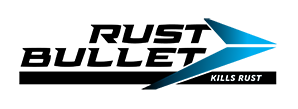Findings by the National Association of Corrosion Engineers (NACE), on the economic impact of rust and corrosion (based on 2013 figures) are staggering. Globally, this twin menace costs US $2.5 trillion, or roughly 3.4% of global GDP. The report further estimates that, enforcing proper rust and corrosion preventive measures could lead to between US $375 and US $875 of cost savings. That’s an equivalent of between 15% and 35% of the losses.
The real challenge, however, is finding the right rust and corrosion prevention paints.
Understanding the impact of rust and corrosion
For many of us, a figure like “US $2.5 trillion” might not resonate, until we put some context around it. Asset owners, who own, operate and maintain agricultural, industrial or commercial assets, might have a better appreciation of the amount of damage these twin menaces do if they looked at the costs in terms of their respective industries.
According to the NACE, the Agricultural and Service sectors in the U.S. are responsible for wiping out 1% and 1.3% respectively out of the U.S. economy, while corrosion in the Industrial sector carve out over 9% of GDP. To put those figures into perspective, thanks to rust and corrosion, the three sectors (Agriculture, Service and Industry) lost roughly US $2B, US $146B and US $303.2B respectively during the study period. When asset owners in those sectors see specific figures like that, it gives some cause to ask: What might we do to prevent losses such as these?
The answer is simple
Fight corrosion on multiple fronts!
It’s not enough to watch for rust and corrosion in your assets, and then promptly get to work with a can of paint or a spray gun. By that time, rust has taken hold of your assets and is well on its way to doing costly damage. And its not enough to start price-shopping for rust prevention paints so you might take an “informed” decision. Pricing will come into the equation – but not initially. You must act proactively:
- Make sure rust and corrosion does not have an opportunity to take hold onto your assets – that’ll save you a lot of money in terms of fixing the problems created by rust
- Keeping those rust free translates to more productive use of the asset – the asset spends less time in a garage and more time contributing to GDP by producing much needed goods and services
- Pro-activity saves you money too, because it means you don’t spend as much on replacing rusted parts or corroded sections of your equipment or infrastructure
As simple as the solution is, it’s more complex to implement it. You can, however, do battle against corrosion by following the instructions of equipment manufacturers. Avoid misuse of the asset – such as leaving a tractor or truck submerged in a ditch for days at a time! And implement a strict maintenance protocol for each asset. Most importantly though, is the need to fight rust and corrosion by using the right corrosion prevention products.
What’s the right rust or corrosion inhibitor?
Each sector of the economy, be it industry, commercial, agricultural, military or residential, uses different assets, and each of them has a different rust and corrosion exposure profile. When you draw up a plan to fight corrosion and rust, one of the best tools in your armory is the right rust paint or corrosion inhibitor.
While price certainly does impact your choice, there are certain important guidelines that make a good rust inhibitor:
- A truly environmentally-friendly product is a great choice. Pick one that is low VOC-compliant. These products have less harmful particles and therefore are more friendly to the ozone layer
- Choose a product that does not require extensive prep work or additional pre-coating, under-coats or top-coating. This not only saves time, but it also saves you a lot of effort and money
- Always favor a product that covers a lot more surface area than other traditional paints and inhibitors. If you use such products, you’ll be able to cover more surface with fewer cans, tins or containers of the product. The result: Battle rust and corrosion and save money at the same time!
- And, the product you choose must be chip resistant, and should be able to withstand the harmful UV rays that the sun emits. These characteristics are especially essential when fighting corrosion in the outdoors. Extreme heat, cold, humidity and high winds can add more stress on freshly painted assets. By choosing the right rust inhibitor paints, you’ll insulate yourself from these forces of nature
- And, of course, look for a value-for-money proposition. But remember, low cost doesn’t always translate to value for money!
These are general guidelines that every asset owner must keep in mind when shopping for a rust inhibitor. However, what makes a “good” rust prevention product? The answer, again, is “it depends on the application”. Marine applications have a different set of rust prevention requirements than Industrial applications. And if you own a fleet of trucks, pickups or buses, then your automotive applications will require a different set of rust inhibitors than those used for home or farm applications.

